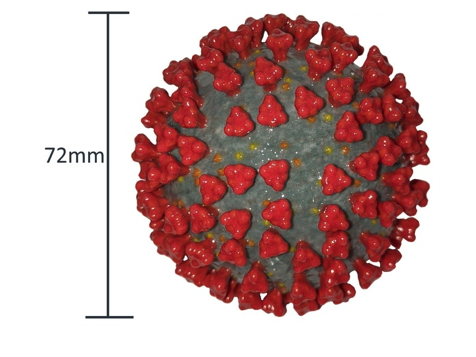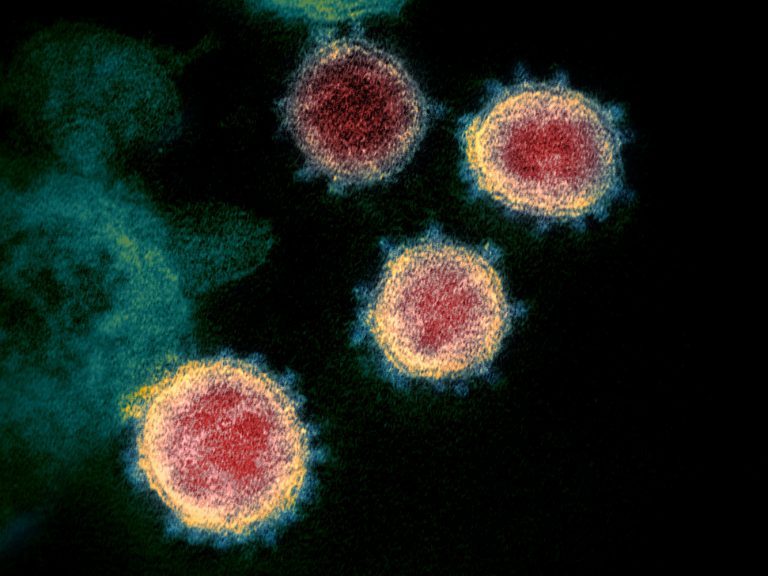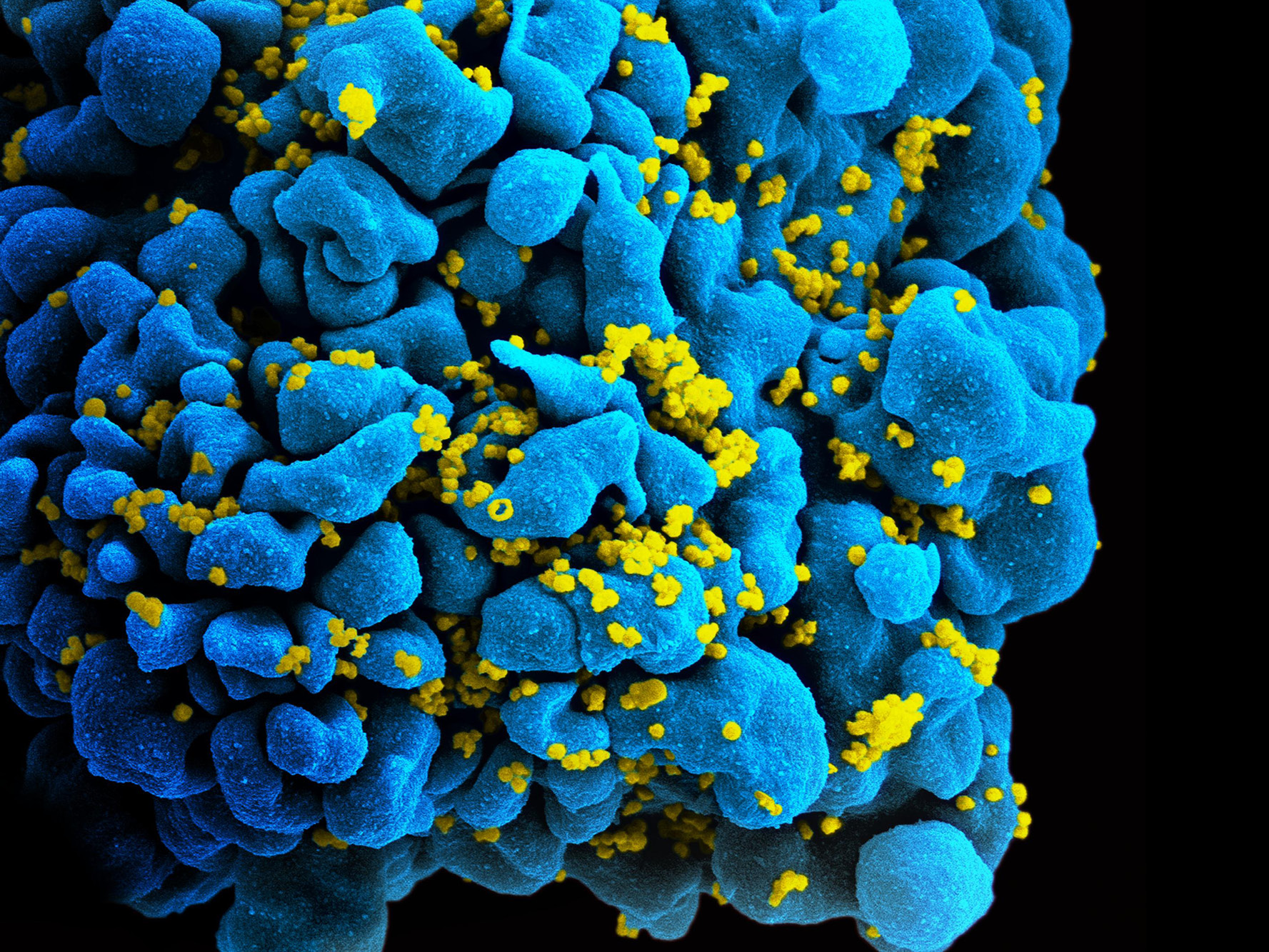SARS-CoV-2, or Severe acute respiratory syndrome coronavirus 2, is an RNA virus from the family coronavirus that causes the respiratory disease covid-19.
The virus was detected at the end of last year in the Wuhan sub-province of China, and in most cases causes milder disease symptoms that disappear within two weeks. But sometimes, especially in certain groups such as the elderly and people with certain other underlying illnesses, the infection becomes more severe and can in some cases lead to death.
The virus is believed to have zoonotic origin, that is, it has been transmitted to humans from another animal. Where the origin of the disease comes from, that is to say from which host animal the virus originates, is still unknown. However, the virus has close genetic similarity to a corona virus carried by some bats, which might indicate where the virus comes from.

This model shows the SARS-CoV-2 virus, which causes the illness covid-19. The globe-shaped envelope has a membrane of fat-like substances. Inside the envelope are proteins bound to RNA molecules, that contain the virus’s genes. Short spikes of proteins and longer spikes of glycoprotein stick out of the envelope and attach to receptors on the surface of attacked cells. The spikes, which are bigger at the top, give the virus its appearance reminiscent of the Sun’s corona. This where the coronavirus’s name comes from.
Testing is an important tool for tracking and preventing the spread of infection during an epidemic.
One type of test looks at if a person is infected by looking for traces of the virus’s RNA genetic material. The test is taken using a swab stick inserted into the throat. The small amounts of RNA or DNA that attach to the swab are analyzed using the PCR technique, which was invented by Kary Mullis in 1983. Ten years later he was awarded the Nobel Prize in Chemistry.
Another type of test looks for antibodies to the virus in the blood. This indicates that the person has had the disease.

